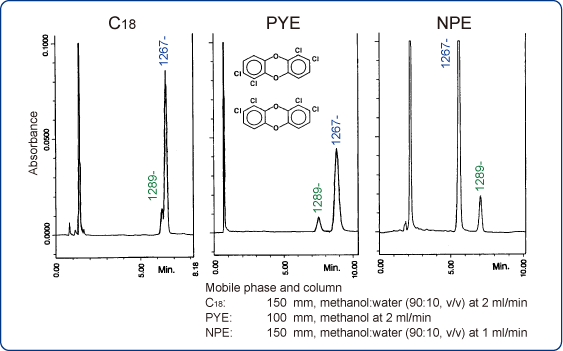| Separation of Dioxins
Polychlorodibenzo-p-dioxins(PCDDs) have been in the focus of environmental separations due to their extreme toxicity. The PCDDs are usually present as a mixture of isomers, and the mixture must be separated in order to evaluate the biological effects of each isomer.
|
 |
Separation of 1,2,6,7-and 1,2,8,9-TCDDs
The combination of NPE and PYE phases provided the selectivity required for the separation of isomers of polychlorinated aromatic compounds, namely polychlorobenzo-p-dioxins (PCDDs). The two stationary phases, having aromatic functionalities of opposite nature, also provided the possibility of structural assignment of TCDD (tetrachlorodibenzodioxin) isomers based on the chromatographic retention on the two phases.
 |